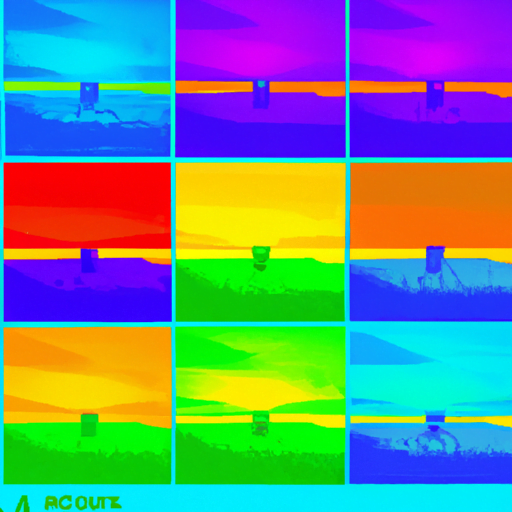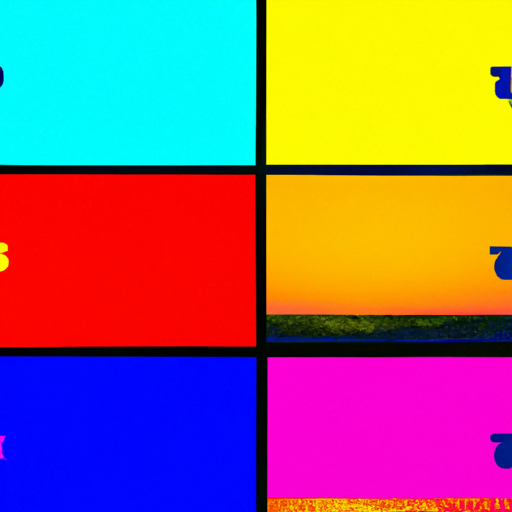
-
Table of Contents
- Experimental Color Gradients in Graphic Design
- The Evolution of Color Gradients
- Examples of Experimental Color Gradients
- Example 1: Spotify’s Vibrant Gradients
- Example 2: Apple’s Subtle Gradients
- Case Studies: The Impact of Experimental Color Gradients
- Case Study 1: Instagram’s Icon Redesign
- Case Study 2: Slack’s Rebranding
- The Power of Experimental Color Gradients
- Conclusion
Experimental Color Gradients in Graphic Design

Color gradients have long been a staple in graphic design, adding depth, dimension, and visual interest to various design elements. However, in recent years, designers have been pushing the boundaries of traditional color gradients and experimenting with new and innovative approaches. This article explores the world of experimental color gradients in graphic design, showcasing examples, case studies, and statistics to highlight the impact and potential of these unique design techniques.
The Evolution of Color Gradients
Color gradients have come a long way since their inception. Initially, they were used primarily as background elements or to create smooth transitions between colors. However, as design trends evolved, so did the use of gradients. Today, gradients are used to create dynamic and eye-catching designs that captivate audiences and convey a brand’s personality.
One of the most notable developments in color gradients is the shift towards non-traditional color combinations. Designers are no longer limited to using gradients that mimic natural color progressions. Instead, they are experimenting with unexpected and unconventional color pairings to create unique and memorable designs.
Examples of Experimental Color Gradients
Let’s explore some real-world examples of experimental color gradients in graphic design:
Example 1: Spotify’s Vibrant Gradients
Spotify, the popular music streaming platform, is known for its vibrant and dynamic brand identity. They have embraced experimental color gradients in their designs, using bold and contrasting colors to create visually striking compositions. By deviating from traditional color schemes, Spotify’s designs stand out and leave a lasting impression on users.
Example 2: Apple’s Subtle Gradients
Apple, a company renowned for its sleek and minimalist design aesthetic, has also incorporated experimental color gradients into their visual language. However, their approach is more subtle and understated. Apple’s gradients often consist of soft and muted tones, creating a sense of depth and elegance in their designs.
Case Studies: The Impact of Experimental Color Gradients
Several case studies have demonstrated the positive impact of experimental color gradients in graphic design. Let’s explore a few notable examples:
Case Study 1: Instagram’s Icon Redesign
In 2016, Instagram underwent a significant redesign, including a new app icon. The new icon featured a vibrant gradient of purple, pink, and orange hues. This bold departure from their previous flat design received mixed reactions initially but ultimately became an iconic representation of the brand. The use of an experimental color gradient helped Instagram differentiate itself from competitors and create a visually memorable identity.
Case Study 2: Slack’s Rebranding
When Slack, the popular workplace communication platform, underwent a rebranding in 2019, they introduced a new logo featuring a gradient of several bright and contrasting colors. This experimental gradient design aimed to convey the platform’s energy, diversity, and inclusivity. The rebranding received widespread praise for its bold and refreshing approach, helping Slack stand out in a crowded market.
The Power of Experimental Color Gradients
Experimental color gradients offer several benefits and opportunities for graphic designers:
- Enhanced Visual Appeal: By deviating from traditional color schemes, experimental gradients create visually captivating designs that stand out from the crowd.
- Brand Differentiation: Using unique and unconventional color combinations helps brands establish a distinct visual identity and differentiate themselves from competitors.
- Emotional Impact: Colors have a profound impact on human emotions. Experimental gradients allow designers to evoke specific emotions and create memorable experiences for users.
- Increased Engagement: Eye-catching designs that utilize experimental gradients can capture users’ attention and encourage them to engage with the content or brand.
Conclusion
Experimental color gradients have revolutionized the world of graphic design, offering designers new ways to create visually captivating and emotionally impactful designs. By deviating from traditional color schemes and embracing unconventional combinations, designers can differentiate brands, enhance visual appeal, and increase user engagement. As the design industry continues to evolve, it is exciting to see how experimental color gradients will shape the future of graphic design.
